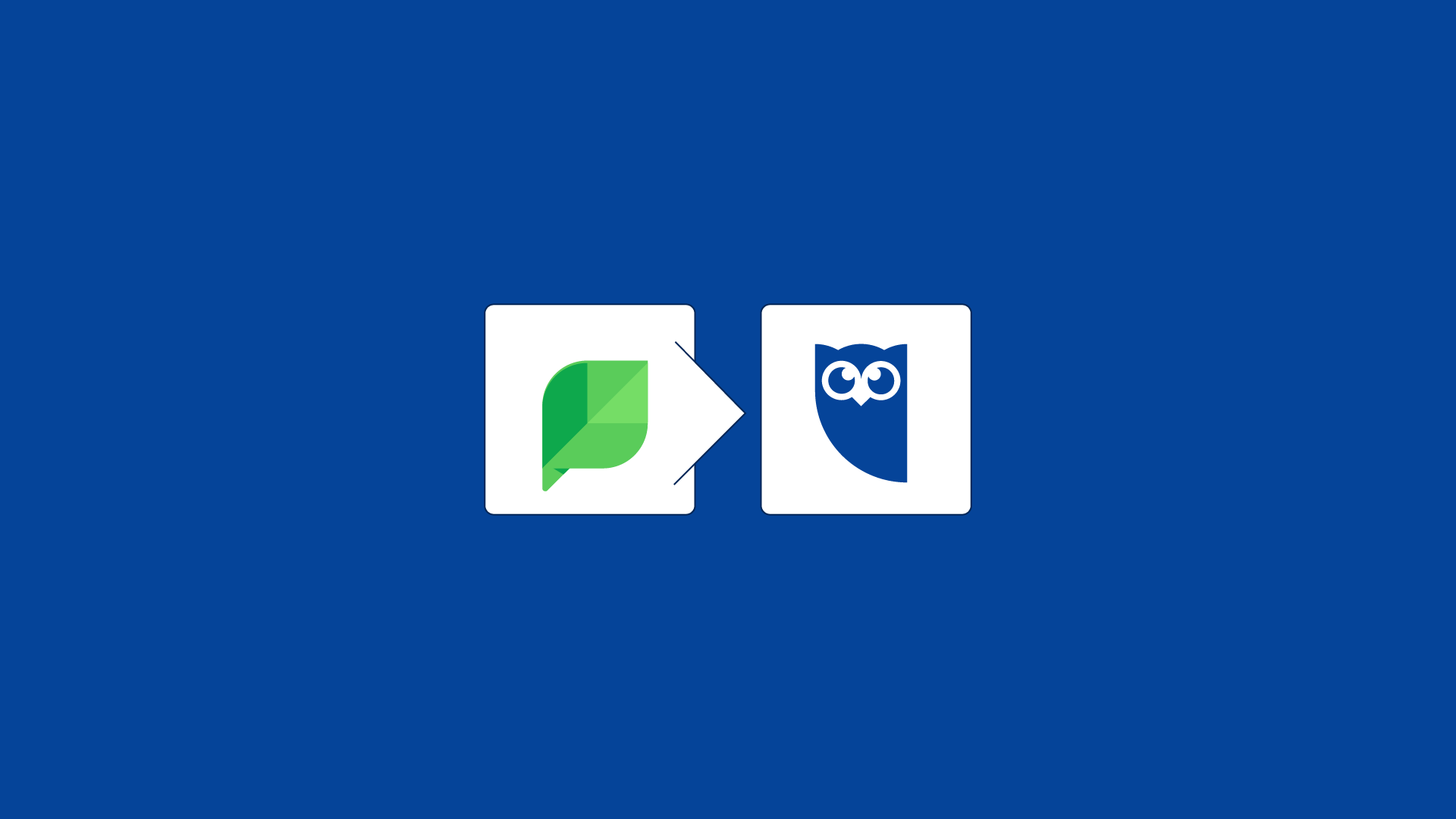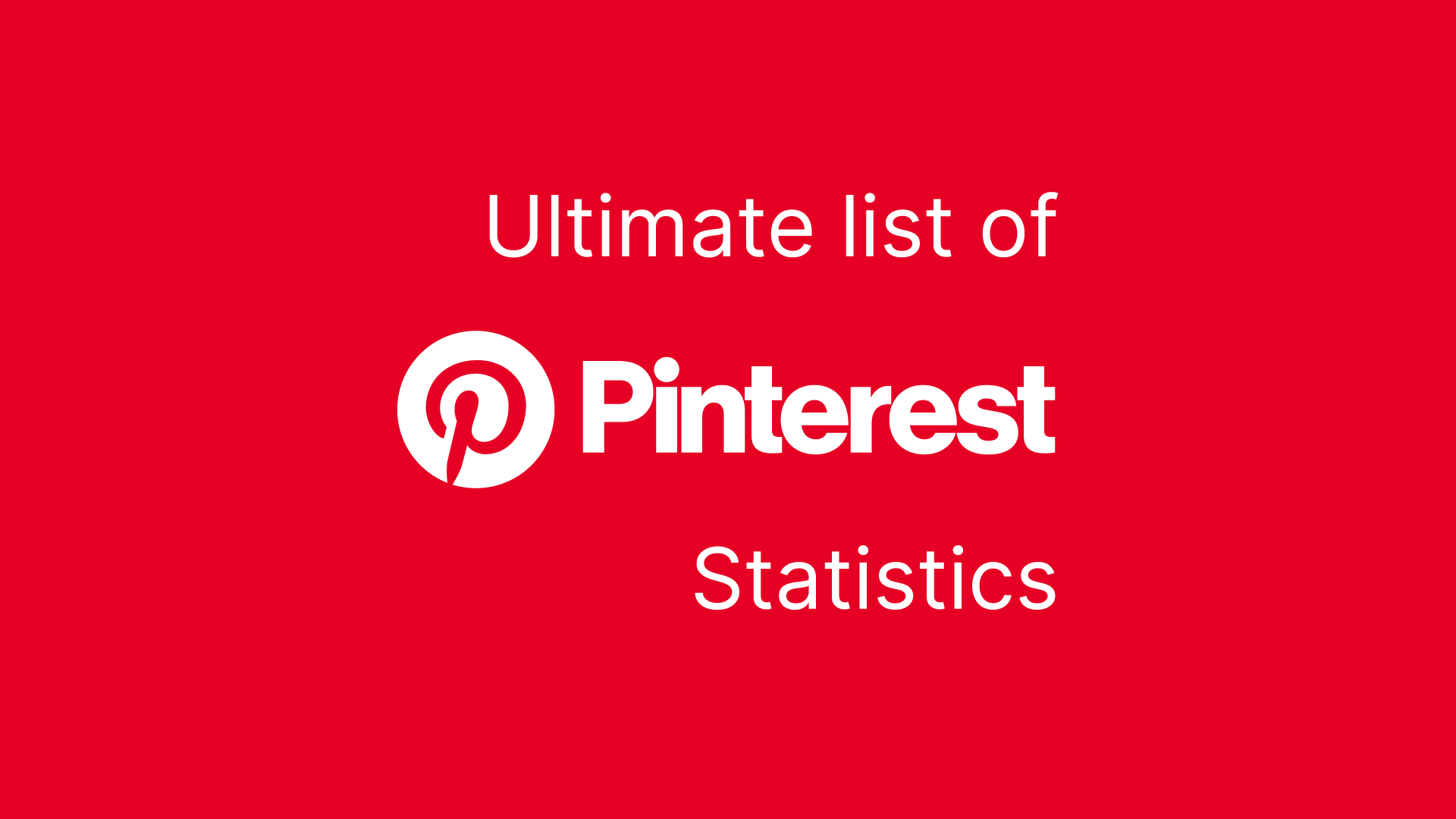Social media can be a great source of traffic to your website when you know what you’re doing. In fact, for many of us, the first thing we do in the morning is open up Facebook or Twitter, or Instagram and start our daily scrolling.
As a result, businesses have sat up and taken notice of the potential power that social media has. It’s now one of the most important cogs in the marketing wheel. Many brands and businesses are experimenting with new and exciting ways to reach their audiences and increasing brand awareness.
To spark your inspiration, we’ve gathered together a list of the best social media marketing tactics for getting cold, hard results.
It’s no secret that social networking sites like Facebook, Twitter, LinkedIn, and others rank amongst the most popular websites in the world. Billions of people are connected to one network or another and they keep growing.
And every day, new users are joining the party, which is why businesses are now taking a keen interest in how they can make the most of these free opportunities.
Here are five simple ways to get the most out of your social media marketing:
The Top Social Media Marketing Tactics
1. Develop a Social Media Marketing Plan
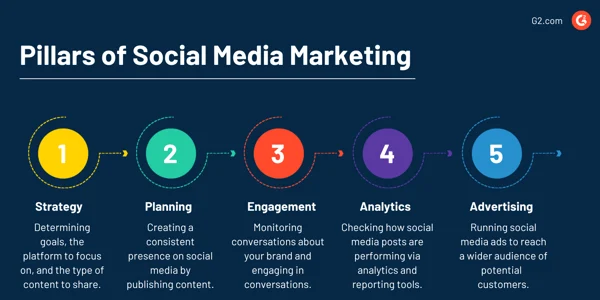
It’s easy to just jump into social media without much of a plan, but that’s not going to help you achieve your goals. Instead, take some time to develop a social media marketing plan.
Your plan should include social media marketing goals, objectives, target audiences, chosen platforms and benchmarks. This will make sure that you’re on track and getting the results you want.
2. Set Clear Goals and Establish KPIs
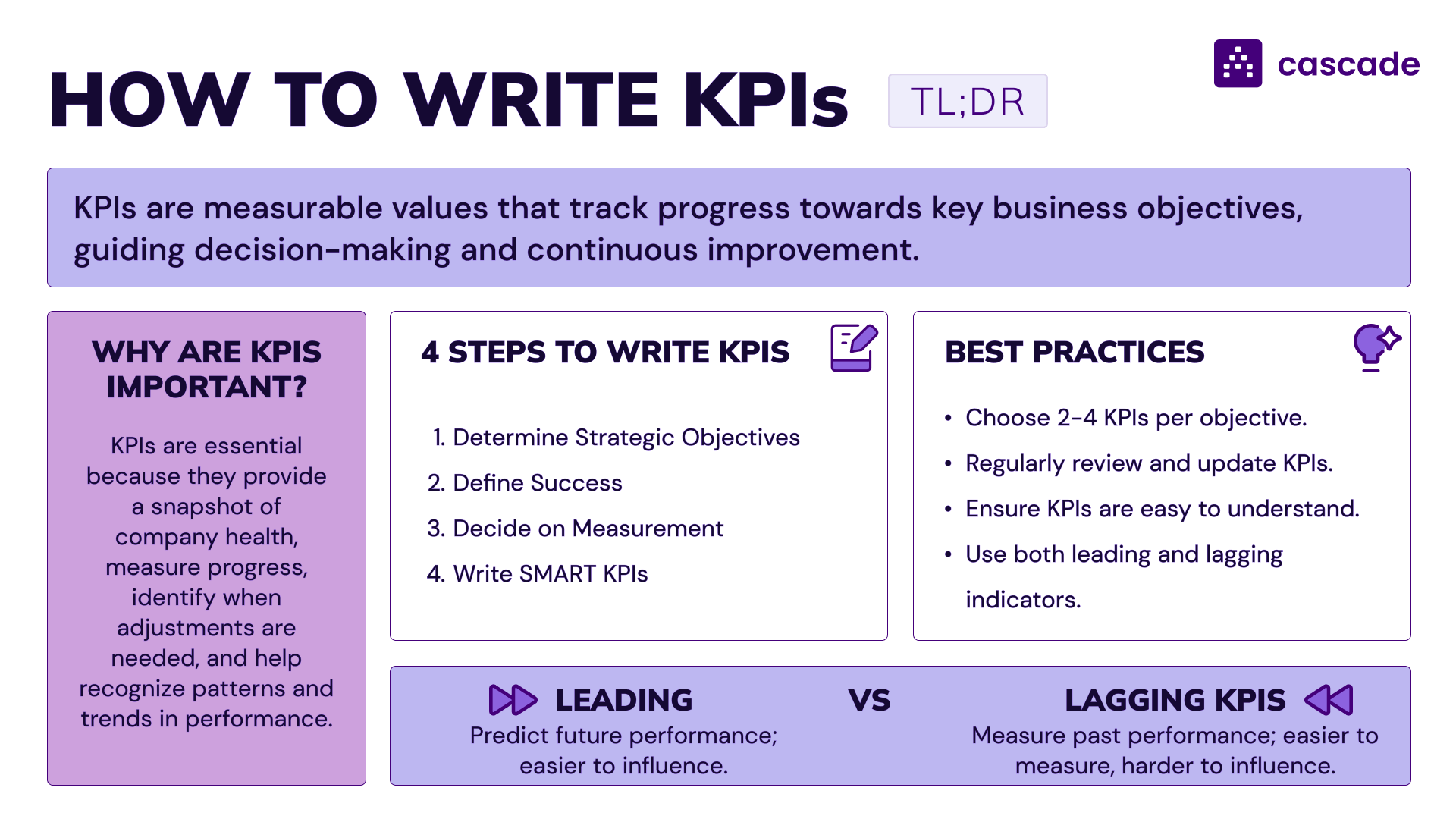
Setting clear goals and establishing Key Performance Indicators (KPIs) is a crucial step in creating a successful social media marketing strategy.
Without clear goals, your social media efforts can become aimless and ineffective. Start by defining what you want to achieve with your social media marketing. Your goals should be Specific, Measurable, Achievable, Relevant, and Time-bound (SMART).
For example, you might aim to increase brand awareness by 20% in the next six months, boost website traffic by 50% in the next three months, or generate 100 new leads per month through social media. Once you have your goals in place, establish KPIs that align with these objectives.
KPIs could include engagement rates (likes, comments, shares), reach and impressions, click-through rates (CTR), conversion rates, follower growth rate, and social media-driven website traffic and sales.
By setting clear goals and establishing KPIs, social media marketers can focus their efforts on what matters most and measure the success of their social media marketing strategy.
This approach ensures that every post, campaign, and interaction is geared towards achieving your overarching business objectives.
3. Research Your Target Audience

Understanding your target audience is essential for creating a social media marketing strategy that resonates with them.
To effectively engage your audience, you need to know who they are, what they care about, and how they interact with social media. Start by researching the demographics of your audience, such as age, location, job title, and more. This will give you a clearer picture of who you are trying to reach.
Next, delve into their interests and behaviors. What are their hobbies? What kind of content do they consume?
What are their pain points and challenges? Understanding these aspects will help you create content that speaks directly to their needs and interests.
Additionally, identify their preferred social media platforms and content types. Some audiences may prefer visual content on Instagram, while others might engage more with professional content on LinkedIn.
Use social media analytics tools and surveys to gather data about your target audience. This information will help you tailor your social media marketing efforts to reach and engage them effectively.
By knowing your audience inside and out, you can create a social media marketing strategy that not only captures their attention but also drives meaningful engagement and results.
4. Conduct a Social Media Audit
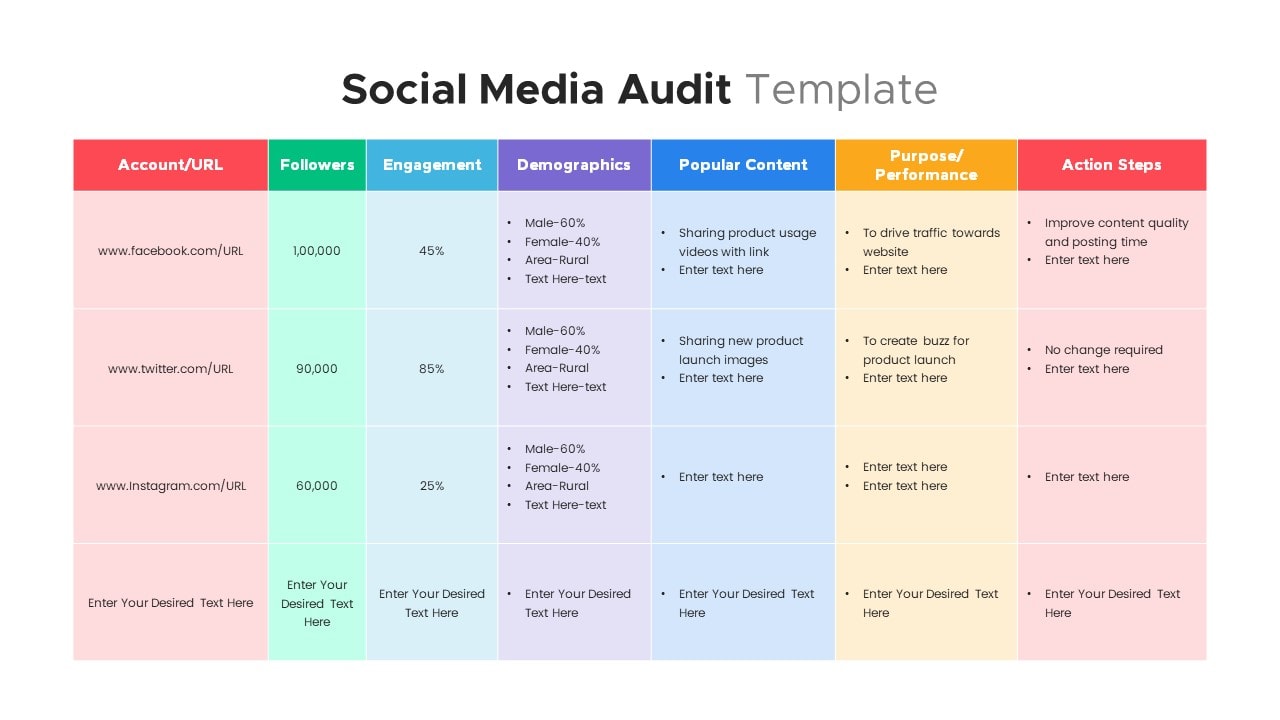
A social media audit is a thorough review of your social media presence, including your profiles, content, and engagement.
Conducting a social media audit helps you identify strengths and weaknesses in your social media presence, assess your brand’s consistency across social media platforms, and evaluate the effectiveness of your current social media marketing strategy.
Start by using a social media audit template to guide your review. Check the completeness and consistency of your profiles across different platforms.
Are your profile pictures, bios, and links up-to-date and consistent? Next, evaluate the quality and relevance of your content. Are you posting content that resonates with your audience and aligns with your brand’s voice?
Look at your engagement rates and patterns. Which types of posts are getting the most likes, comments, and shares?
Analyze your follower growth rate and demographics to see if you are attracting the right audience. Finally, review your social media-driven website traffic and sales to measure the direct impact of your social media efforts.
By conducting a social media audit, you can refine your social media marketing strategy and make data-driven decisions to improve your online presence.
This process will help you identify areas for improvement and opportunities for growth, ensuring that your social media efforts are as effective as possible.
6. Use a Social Media Calendar
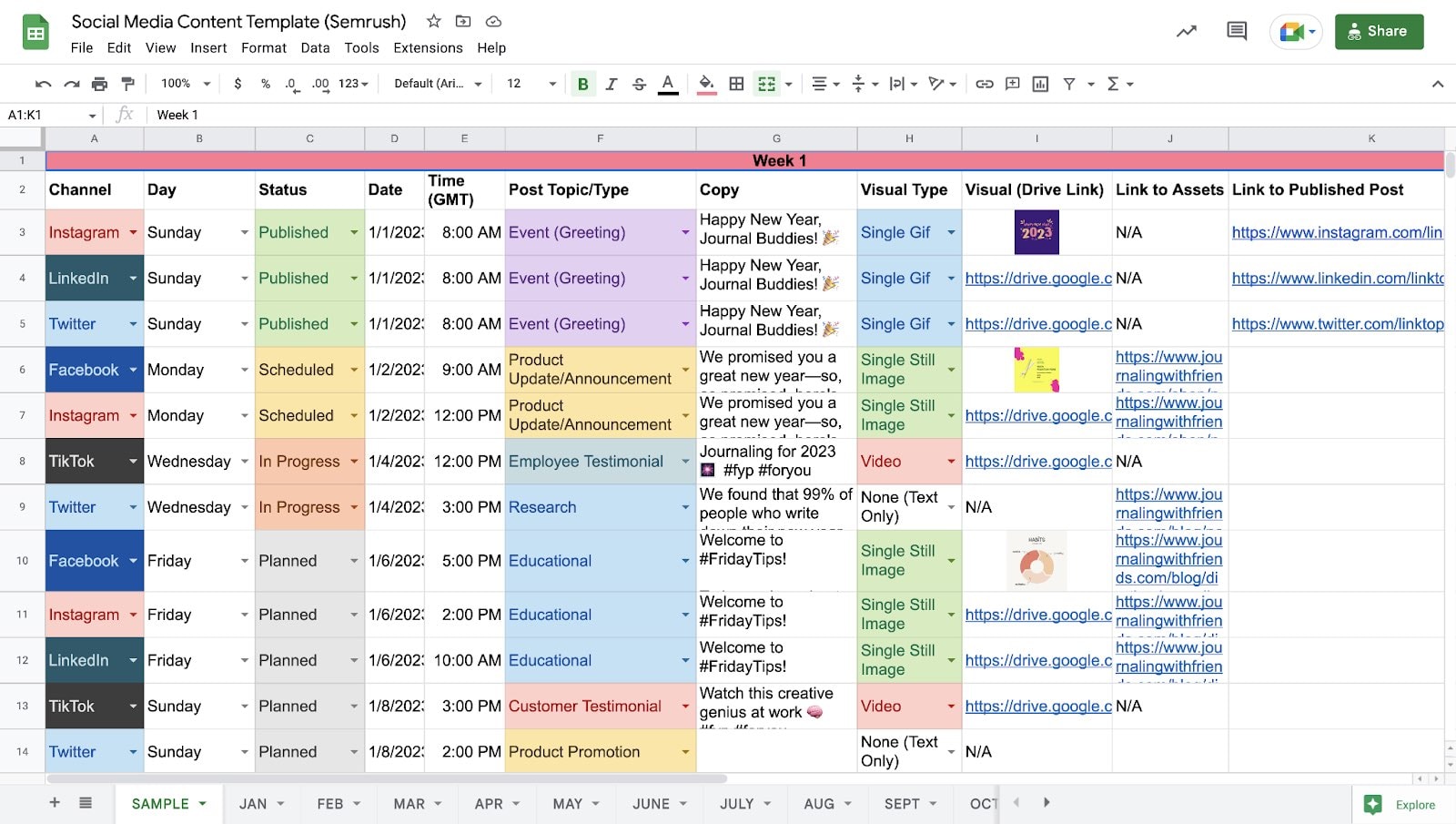
A social media calendar is an essential part of content planning. Especially if you work with multiple people or are publishing content across multiple channels. It’s an organized way to keep track of upcoming posts and other important deadlines.
Plus, it makes it easier to share information among team members so everyone knows what to expect in the coming weeks or months.
7. Post at the Best Times
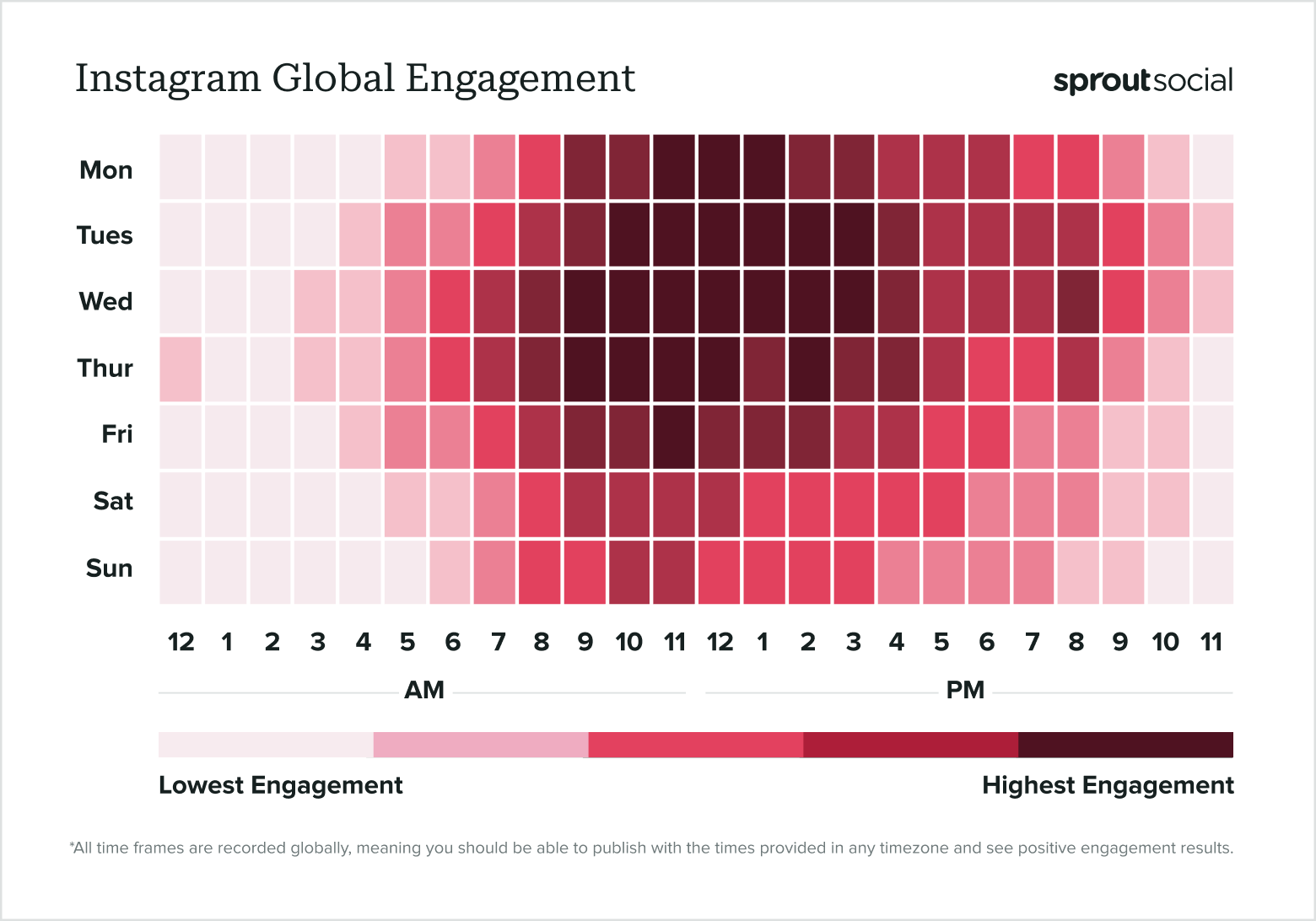
Every social network has different best practices when it comes to posting content — even down to specific times of the day.
For example, according to HubSpot research, the best days and times to post on Facebook are Thursday through Sunday from 1 – 4. Excelling in the social media game requires understanding these optimal posting times to maximize engagement and stay ahead of the competition.
Social media is a great tool for marketing, but it only works when you know what you’re doing. This article will walk you through actionable steps to help you get the most out of your social media platforms.
8. Establish a Consistent Posting Frequency
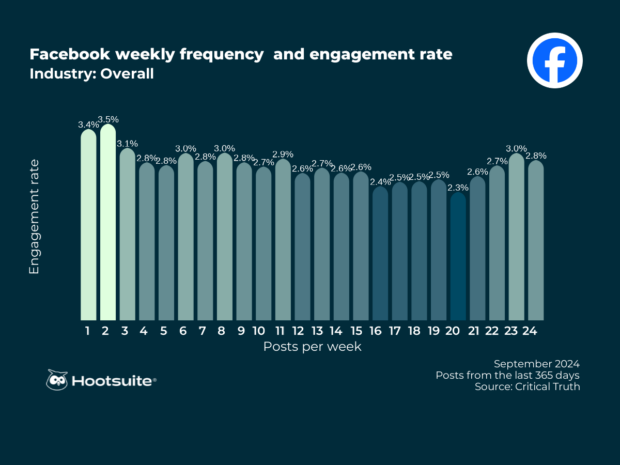
Let’s be honest, posting on social media can be a daunting task. But by establishing a consistent frequency, you’ll find that it gets easier over time and the results are greater in the end.
How often should I post? That’s a tough question to answer because there isn’t an exact science to it. The best way to determine which frequency works best for your business is to do some testing with social media users. Start with one post per day, then two posts per day, and so on until you find the sweet spot that resonates with your audience and converts into sales/leads.
9. Add Shareable Graphics to Blog Posts
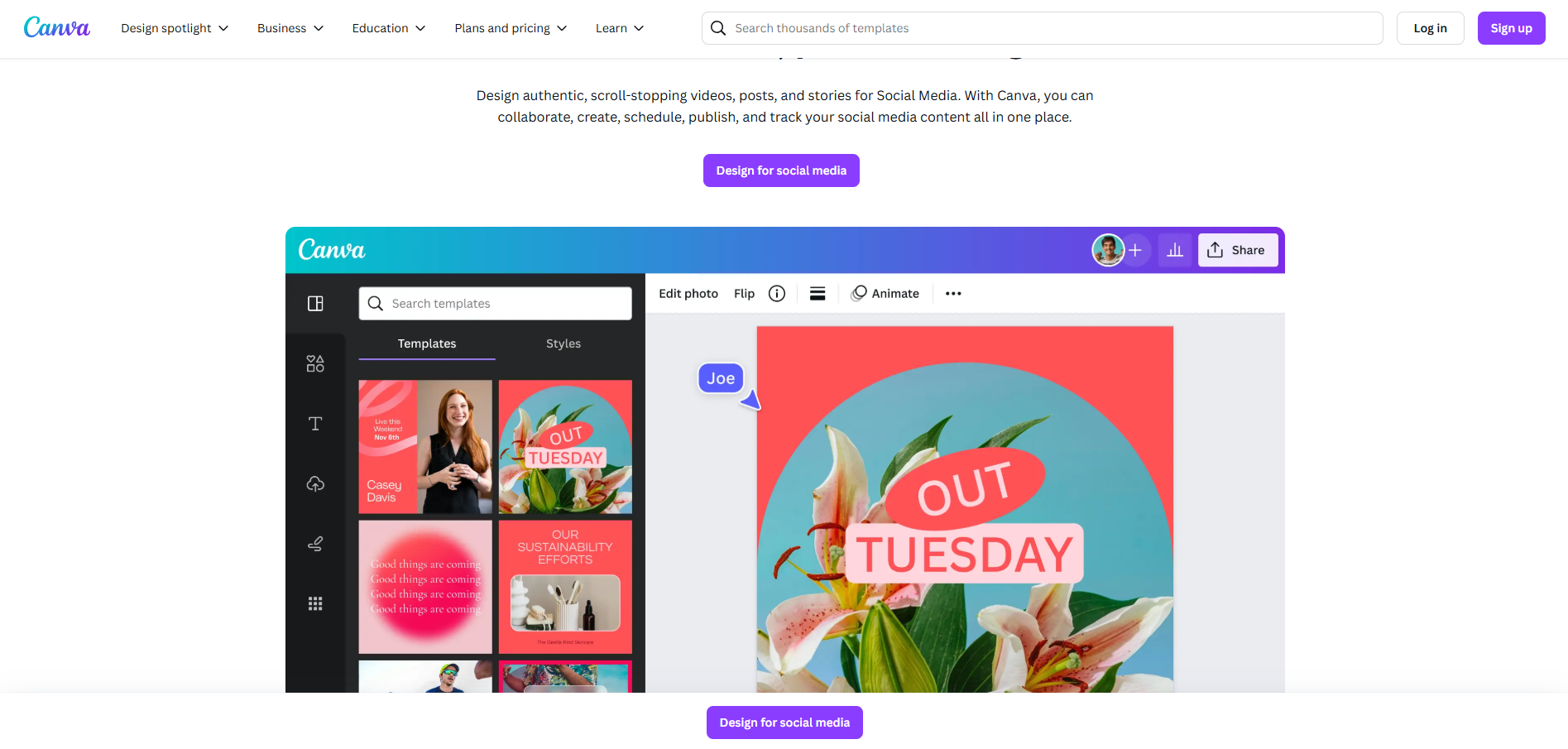
Create graphics that enhance your blog posts and provide value to your readers; this is such an effective tactic because it increases shares and traffic.
If people get value from your content, they’ll share it with their friends, family, and followers who will hopefully do the same.
The average Facebook user scrolls through more than 1,500 stories in his or her feed each day. So how do you get them to stop and notice yours? Graphics help — they draw the eye and give people a reason to engage with your brand.
10. Tailor Content to The Specific Strengths of Each Network
The layout, functionality and user base of each social media platform vary widely. Successful marketers know that the structure and subject matter of their content must reflect these differences in order to get the best results possible.
For example, Twitter is not a good platform for posting long-form content, while Facebook and LinkedIn are ideal.
Instagram is great for photo-based content, but not so great for detailed product descriptions or infographics. Pinterest is perfect for visual content too, but it’s a bad place to post videos.
By tailoring your content to the specific strengths of each network, you can maximize your reach and engagement results on social media.
12. Use Demographic Data to Tailor Content on Each Network
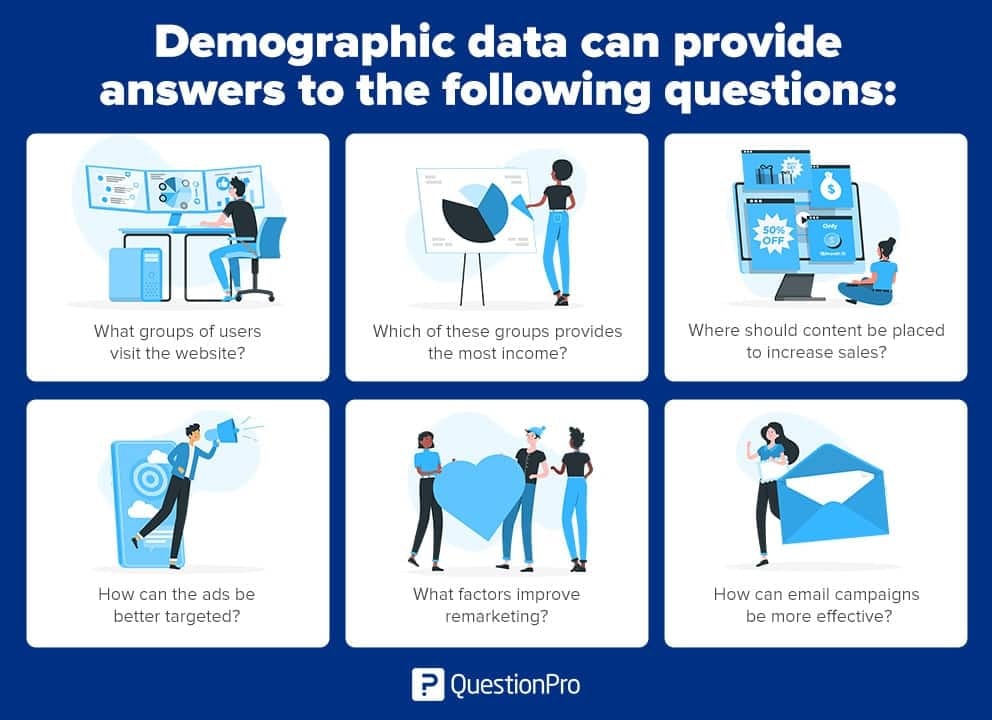
The audience on each social network is different from those on other networks. It, therefore, follows that marketers should tailor the content they share on each network to suit the audience there.
This means that you need to pay attention to demographic data when crafting your social media strategy.
For instance, according to HubSpot’s 2018 State of Inbound report, Facebook has more users aged 65+ than any other age group (31%). Twitter has more users aged 18 – 29 (37%) more than other agegroups.
13. Pay Attention to the Length of Your Captions
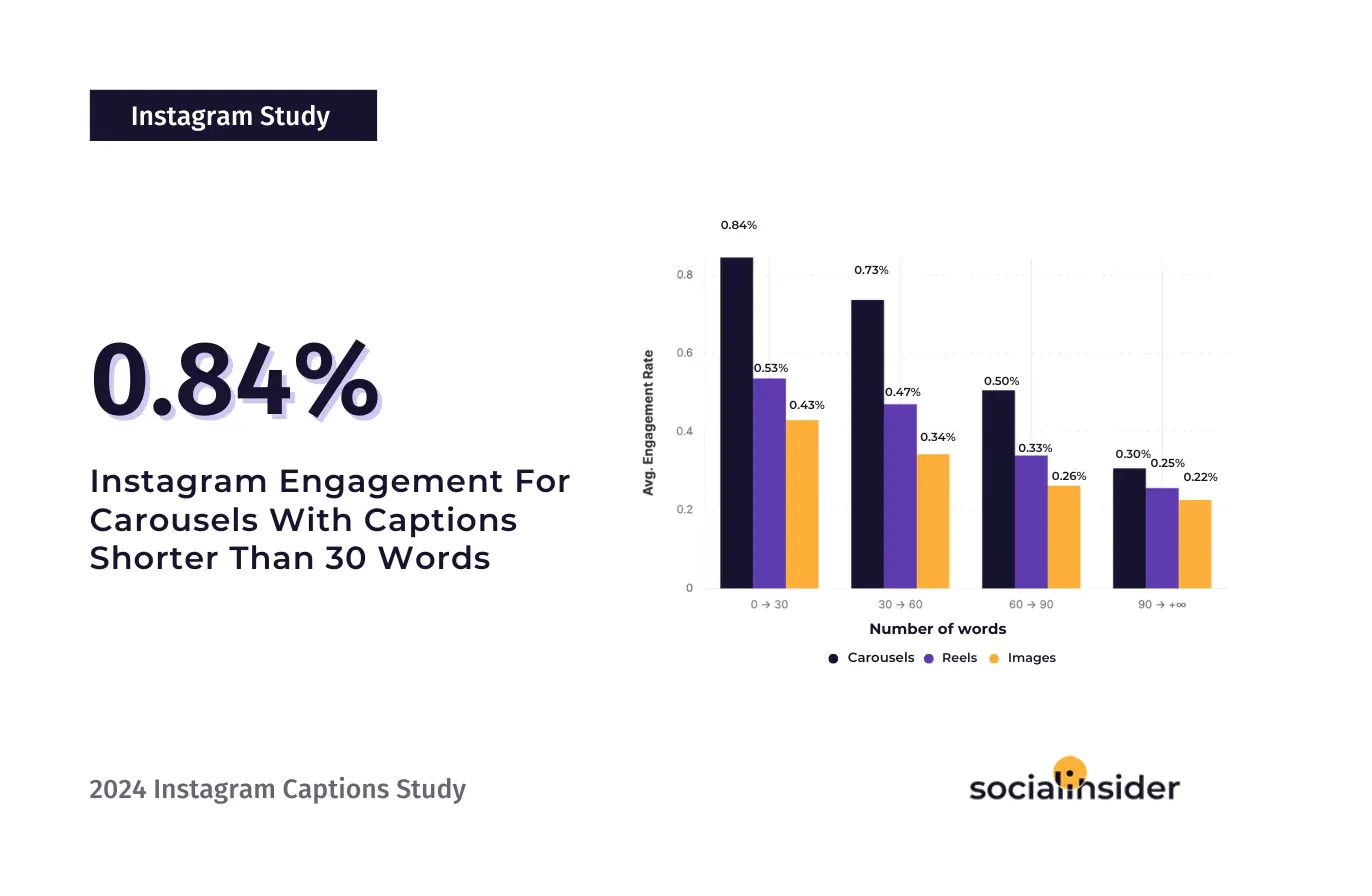
Including a caption with each of your social posts is a good way to increase organic reach and engagement. For example, Instagram captions average around 2,000 characters, which is more than enough space for an engaging caption that can describe your content in detail.
Posts on Facebook average 40 characters, but if you write longer captions, they’ll show up in full when users click “see more.”
14. Try Instagram Shopping if you are selling online
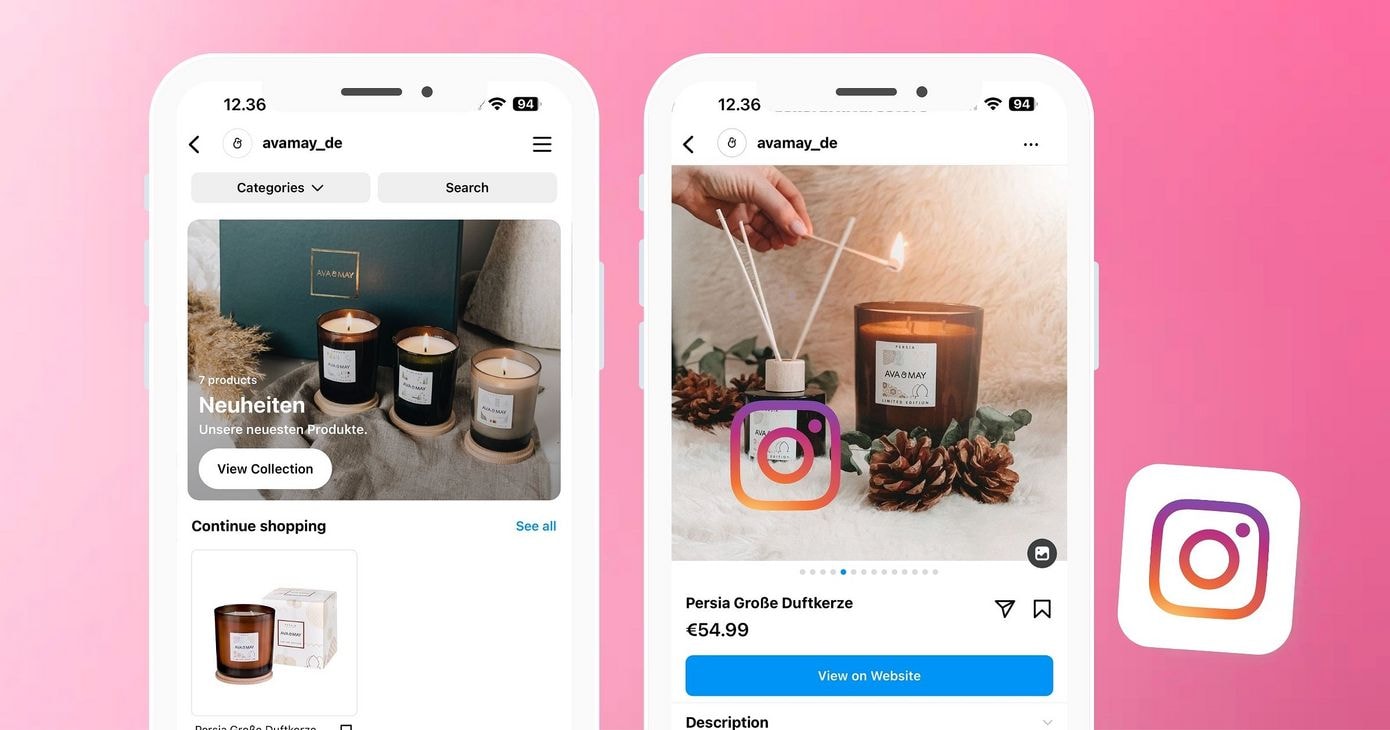
Create an Instagram Shopping account and get started selling products directly from your Instagram posts. This feature is still in beta, so not everyone has access to it yet.
But if you do, you can tag products in up to five posts per day.
If there’s one thing that Instagram has done well, it is the introduction of shoppable posts. Nowadays, it is possible to sell your products directly to your Instagram followers without having to leave the app.
To get started with Instagram Shopping, all you need to do is:
Verify your Instagram account as a business profile (if you haven’t already).
Go to your bio and click on Edit Profile. Scroll down until you see the Product Catalog. Click on Edit.
Follow the instructions on the screen by scanning in barcodes or uploading images with product information. (you will need an approved Facebook catalog). Finally, select Your Business Manager Account.
15. Include User Generated Content in your strategy
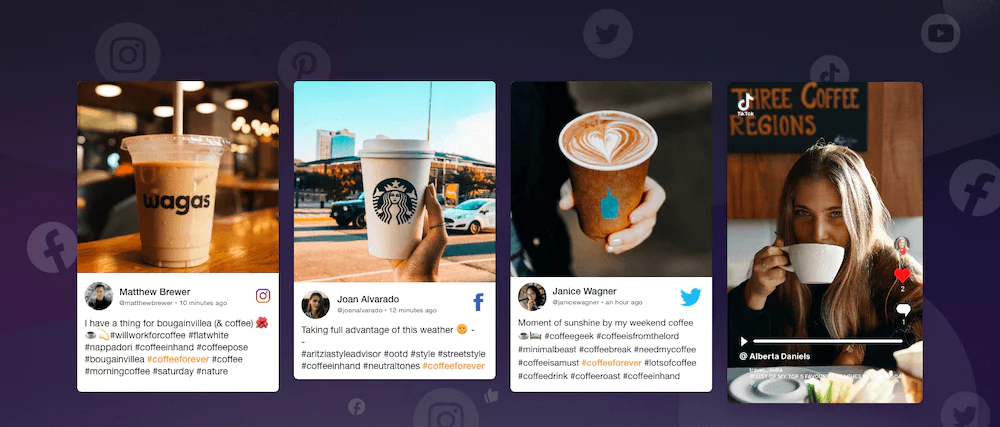
User-generated content (UGC) is any type of content that was created by a user or fan of your brand. UGC includes things like photos, videos, tweets, and blog posts that are related to your brand. This is a great way to increase engagement and add authenticity to your posts.
Social media success stories can also serve as valuable case studies, showcasing recent achievements and trends in social media marketing. It also helps make your business seem more approachable and down-to-earth for potential new customers.
But here’s where it gets really interesting: For every dollar spent on influencer marketing, companies generate $5.78 worth of media value, according to influencer marketing hub.
And while your company might not be able to afford an A-list celebrity as a brand ambassador, many smaller businesses have had great success with influencers who have tens or hundreds of thousands of followers but are still affordable.
16. Repurpose and Cross-Post Content

One of the best ways to get results from social media is to repurpose your blog articles and cross-post them on different platforms.
When you have a piece of content (video, podcast, or blog post) that you know is going to perform well, it would be a shame if it only performed well once. Here’s what I mean…
You should make it as easy as possible for people to consume your content, no matter what platform they’re on. Make sure that if someone reads your blog post that they also know about the podcast episode. Make sure they know about the video as well.
The key to social media marketing is to be as active in your community as possible. No matter what you’re doing, there are always opportunities to engage and interact with your users.
When we talk about the type of content you should be sharing on social media, this includes the following:
Original content – Blog posts, articles, videos, etc. This can be content you create yourself or content from other sources that you’ve curated and believe your audience will enjoy.
Repurposed content – Turn long-form blog posts into shorter video clips, infographics or quotes. Video testimonials from customers are another great example of repurposed content.
User-generated content – Content created by your customers. You can encourage them to share their own photos or videos with you for a chance to win a prize or simply share their thoughts and opinions on a subject.
17. Choose the Right Social Media Platforms
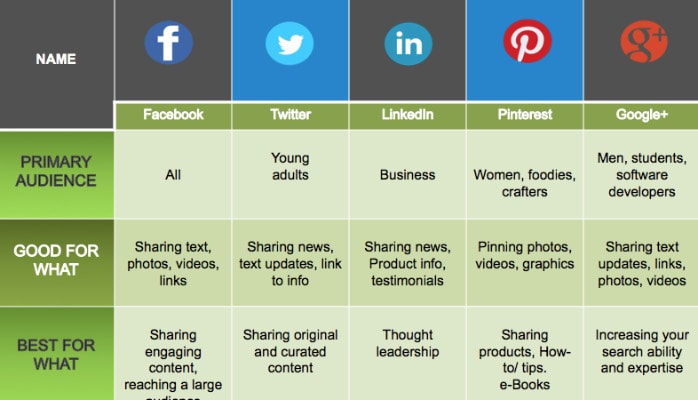
Choosing the right social media platforms for your business is crucial for reaching and engaging your target audience.
Not all social media platforms are created equal, and each one has its own unique features and user base. To select the best platforms for your business, consider your target audience demographics and preferences. Where do they spend most of their time online? What types of content do they engage with the most?
Think about the content types and formats that work best for your brand. If your business relies heavily on visual content, platforms like Instagram and Pinterest might be ideal. For video content, YouTube and TikTok are excellent choices.
If you are targeting professionals, LinkedIn is the go-to platform. Additionally, consider the platform features and capabilities, such as Instagram Stories or Facebook Groups, that can enhance your social media marketing efforts.
Evaluate the competition and market saturation on each platform. Are your competitors active on these platforms? How saturated is the market? Finally, consider your resource allocation and budget. Do you have the time and resources to manage multiple platforms effectively?
Popular social media platforms for businesses include Facebook, Instagram, Twitter, LinkedIn, YouTube, and TikTok. By choosing the right social media platforms, you can focus your efforts on the channels that matter most to your target audience and achieve greater ROI from your social media marketing efforts.
18. Track Performance and Adjust Your Social Media Marketing Strategy
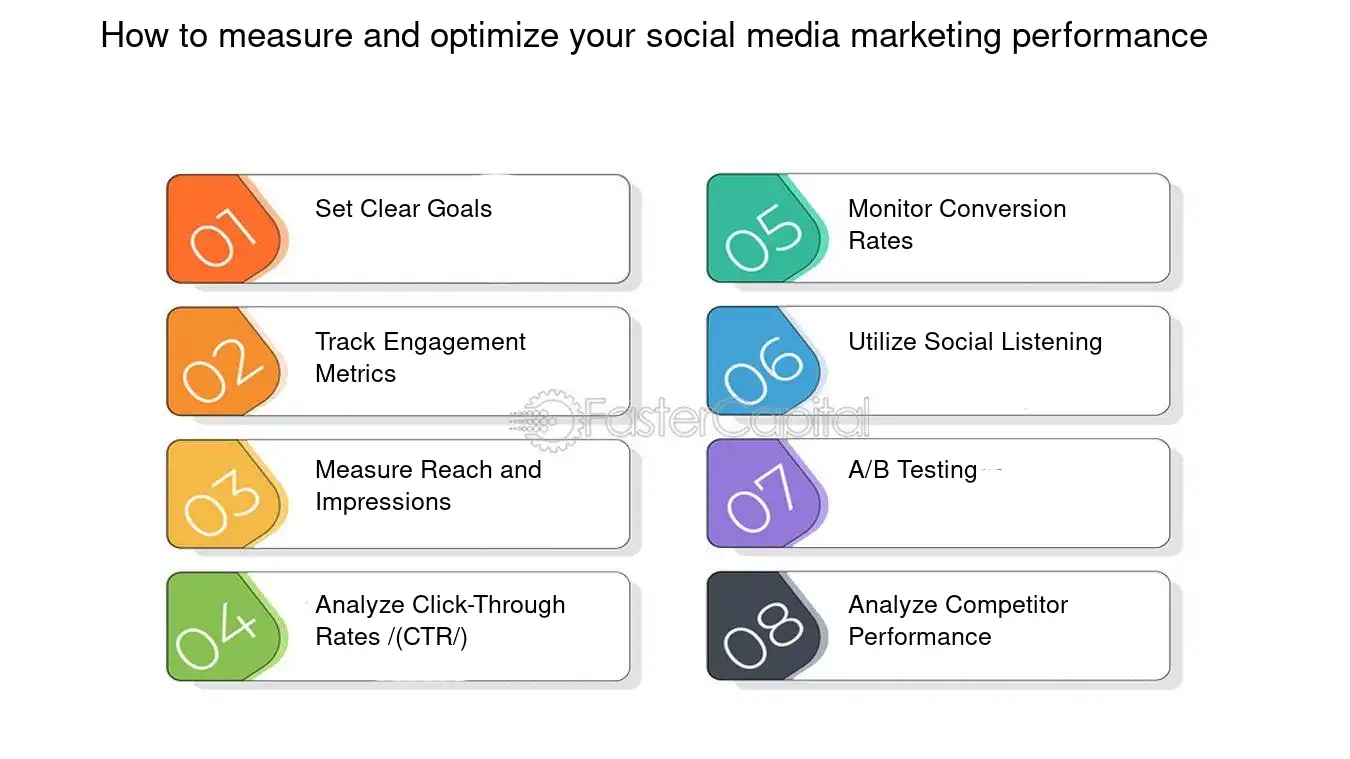
Tracking performance and adjusting your social media marketing strategy is essential for achieving your goals and maximizing ROI. Use social media analytics tools to track your KPIs and monitor your progress towards your goals.
Regularly review your social media metrics to identify strengths and weaknesses in your social media presence, opportunities for growth and improvement, and areas where your strategy may need adjustment.
Based on your findings, refine your target audience and content strategy. Are there certain types of content that perform better than others? Are you reaching the right audience?
Optimize your social media ads and promotions to ensure they are delivering the best results. Consider expanding your social media presence to new platforms if you see potential for growth.
Additionally, focus on improving your social media customer service and engagement. Respond to comments and messages promptly, and engage with your audience regularly to build strong relationships.
By tracking performance and adjusting your social media marketing strategy, you can ensure that your efforts are aligned with your goals and that you’re achieving the best possible results from your social media marketing efforts.
19. Improve Customer Service
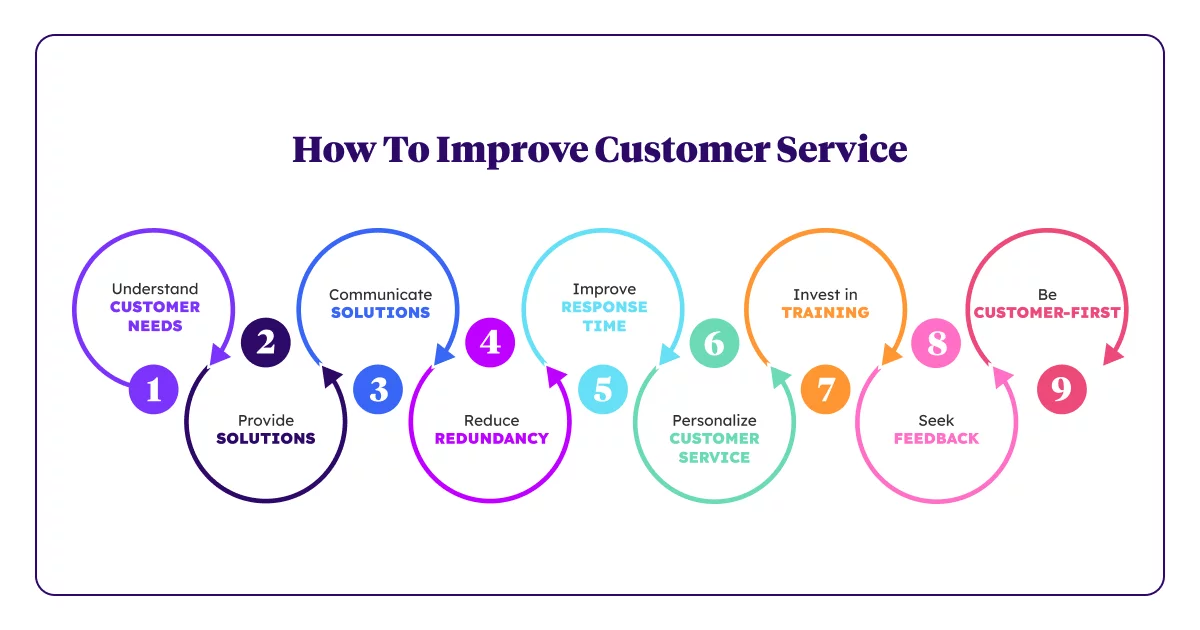
The days of having poor customer service are over. One bad experience can get shared on social media and ruin your reputation very quickly.
One way that you can improve your customer service is through Twitter Direct Messages (DMs). These allow you to have conversations with customers in private rather than publicly on Twitter where anyone can see it.
Another way is by using Facebook Messenger. Facebook allows you to create a business page that makes it easy for potential customers to reach out directly with any questions or concerns.
Social media provides an easy way for customers to voice concerns about your business in front of a very public audience.
Since 67% of Americans have made a customer service request through social media, it’s important to be responsive with high-quality answers. Southwest Airlines is well known for its top-notch customer service via Twitter, Facebook.
20. Get Employees Involved
Posting content is one of the best ways to increase engagement on social media channels; however, this can also be one of the most time-consuming tasks.
The solution? Get your employees involved! Ask them to share company updates, industry news, and other relevant content on their personal social media profiles. This will help you increase your reach and generate more engagement without having to manage multiple accounts.
Your employees may be one of your most valuable assets, especially when it comes to social media marketing. Encourage them to create their own personal profiles and share content from your business on their networks.
21. Get Employees Involved
Posting content is one of the best ways to increase engagement on social media channels; however, this can also be one of the most time-consuming tasks.
The solution? Get your employees involved! Ask them to share company updates, industry news, and other relevant content on their personal social media profiles. This will help you increase your reach and generate more engagement without having to manage multiple accounts.
Your employees may be one of your most valuable assets, especially when it comes to social media marketing. Encourage them to create their own personal profiles and share content from your business on their networks.
22. Make Use of GIFs and Memes
Incorporating GIFs and memes into your social media strategy is a great way to add some fun, creative content to your page. It’s also a great way to save time since these types of posts don’t require much text or explanation. Plus, because they’re so popular right now, they encourage engagement.
If you want people to pay attention to your social media posts, then you need to grab their attention as quickly as possible. And one of the best ways for you to do this is through GIFs and memes.
These types of images tend to grab people’s attention immediately and hold it for an extended period of time. If this happens, then there is a good chance that your company message will stick in their head long after they have moved on.
23. Harness the Power of Video Content
Video content has become a dominant force in social media marketing, and leveraging it can significantly boost your engagement and reach. With platforms like YouTube, TikTok, and Instagram Reels gaining immense popularity, incorporating video into your social media strategy is essential.
Create short, captivating videos that align with your brand’s message and resonate with your target audience. These can include tutorials, behind-the-scenes glimpses, product demonstrations, or customer testimonials. Video content is highly shareable and can quickly go viral, increasing your brand’s visibility and attracting potential customers.
Consider using live streaming to engage with your audience in real-time. Live videos offer a sense of authenticity and immediacy, allowing you to connect with viewers on a personal level. Host Q&A sessions, product launches, or virtual events to foster a sense of community and encourage interaction.
24. Leverage Influencer Marketing
Influencer marketing continues to be a powerful social media tactic for reaching a broader audience and building trust. Collaborate with influencers who align with your brand values and have a strong following within your target market. Influencers can help amplify your message, introduce your brand to new audiences, and drive conversions.
When selecting influencers, consider their engagement rates, authenticity, and relevance to your industry. Micro-influencers, with smaller but highly engaged audiences, can often deliver better results than those with massive followings. Develop authentic partnerships where influencers genuinely endorse your products or services, creating more meaningful connections with their followers.
25. Embrace Social Media Listening
Social media listening involves monitoring conversations and mentions of your brand, industry, or competitors across various social media channels. By actively listening to what people are saying, you can gain valuable insights into customer preferences, pain points, and emerging trends.
Use social media listening tools to track keywords, hashtags, and brand mentions. Analyze the data to understand customer sentiment and identify opportunities for improvement. This information can inform your content strategy, product development, and customer service efforts, ultimately enhancing your social media marketing strategy.
26. Optimize for Mobile Users
With the majority of social media users accessing platforms via mobile devices, optimizing your content for mobile is crucial. Ensure that your visuals, videos, and website are mobile-friendly, providing a seamless experience for users on smartphones and tablets.
Pay attention to the loading speed of your website and landing pages, as slow-loading pages can deter potential customers. Simplify navigation and design for smaller screens, making it easy for users to engage with your content and take desired actions.
27. Foster User-Generated Content Campaigns
Encouraging user-generated content (UGC) is an effective way to build community and authenticity around your brand. Create campaigns that invite your audience to share their experiences with your products or services. This could include photo contests, hashtag challenges, or testimonials.
UGC not only provides you with valuable content but also strengthens the bond between your brand and its followers. It showcases real-life experiences and builds trust, as potential customers are more likely to trust recommendations from their peers.
By expanding your social media marketing tactics to include these strategies, you can enhance your brand’s online presence, engage your audience more effectively, and achieve your broader business objectives. Stay adaptable and open to new trends, ensuring your social media efforts remain relevant and impactful in the ever-evolving digital landscape.
Which Social Media Marketing Tactics Will You Use?
Although you can go at social media any number of ways—be it posting the most unusual content, starting heated online arguments with other users, or providing them with something they will find valuable and engaging—the common denominators of success are consistency and communication.
Those are just a few of the things that social media offers. It is a powerful tool, but it needs to be treated as such. Take care of your profiles and make sure they stand out by using posts that offer useful information to your followers.
Frequently Asked Questions about Social Media Marketing Tactics
What is a social media marketing tactic?
A social media marketing tactic is a specific action or strategy used to achieve marketing goals on social media platforms. These tactics can include content creation, engagement strategies, advertising, and more, all aimed at enhancing a brand’s online presence and reaching a target audience effectively.
What are the 5 ways of social media marketing?
Content Creation and Curation: Developing engaging content that resonates with your audience.
Paid Advertising: Using social media ads to increase reach and drive traffic.
Influencer Partnerships: Collaborating with influencers to expand brand awareness.
Community Engagement: Interacting with followers to build relationships and foster loyalty.
Analytics and Optimization: Tracking performance and refining strategies for better results.
What are the 7 C’s of social media strategy?
Content: Creating valuable and relevant content.
Community: Building a supportive and engaged audience.
Conversation: Encouraging interaction and dialogue.
Collaboration: Partnering with others to enhance reach.
Connection: Establishing meaningful relationships with followers.
Consistency: Maintaining a regular posting schedule.
Conversion: Turning followers into customers or leads.
What is the 50/30/20 rule for social media?
The 50/30/20 rule is a guideline for content sharing on social media: 50% of your content should engage your audience, 30% should be curated content from other sources, and 20% should promote your brand or products.
How can I measure the success of my social media marketing efforts?
Success can be measured using key performance indicators (KPIs) such as engagement rates, follower growth, website traffic, conversion rates, and ROI. Utilizing social media analytics tools will help track these metrics and evaluate the effectiveness of your strategies.





